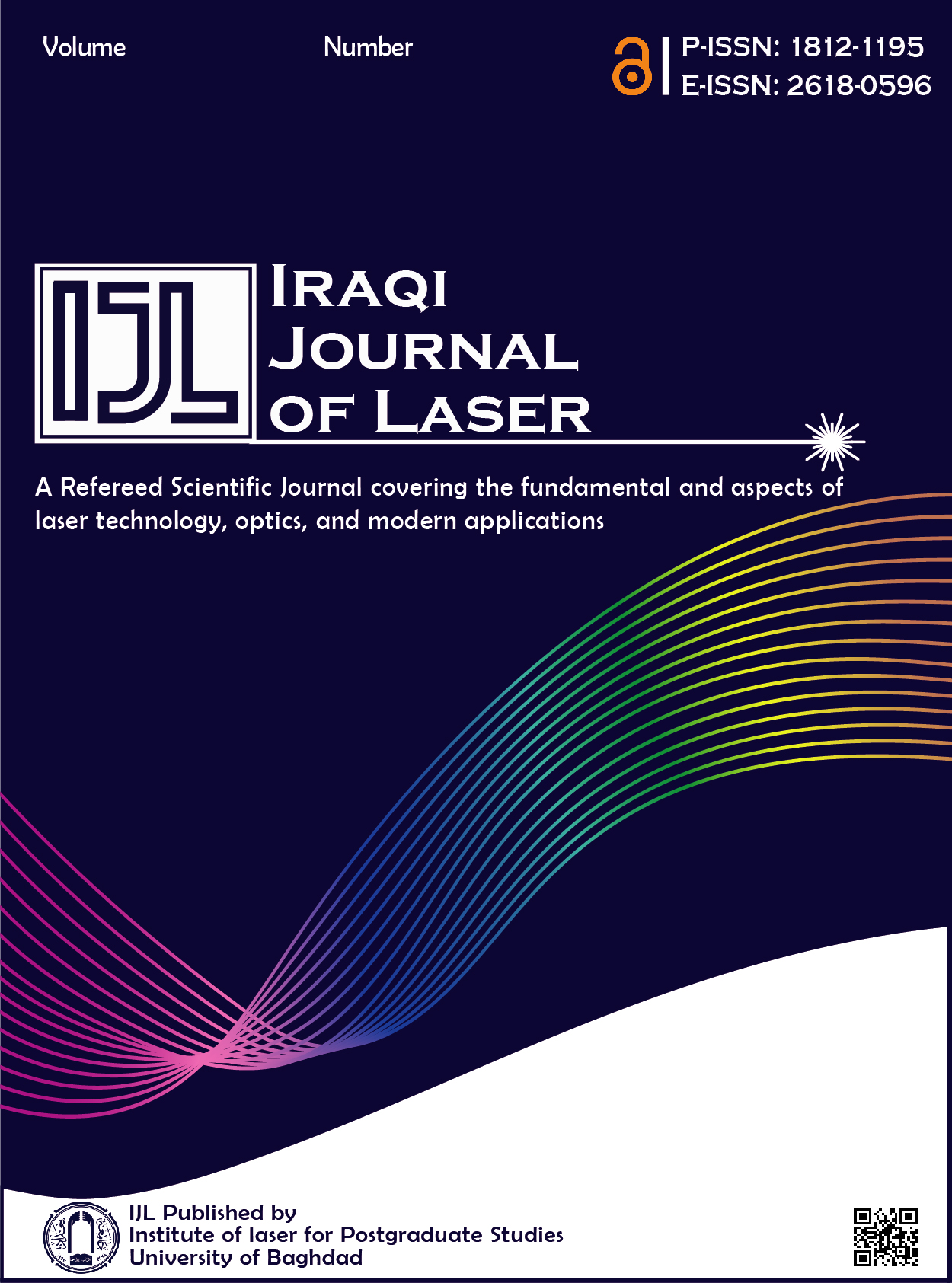Abstract
Dental caries (tooth decay) is one of the most prevalent infectious disease and although of multifactorial origin,Streptococcus mutansis considered the principal pathogen in its development (i.e. bacterial processes damage hard tooth structure (enamel, dentine and cementum), producing dental cavities (holes inthe teeth). The bactericidal properties of the Nd:YAG laser hasbeenresearched analyzing its use in caries prevention and bacterial reduction.One hundred twenty five samples were collected from cariousteeth and isolated bacteria were diagnosed using microscopic examination,culture,biochemicaltests, and Api 20 strep system.The results of this study showed that a noticeable decrease in the viability of Streptococcusmutanswere obtained using Q-switched Nd:YAG laser (1064 nm), (3 Hz) repetition frequency,(0.796 ,0.955) J/ cm2energy density by applying (900,1260) number of pulses. Itwas concluded that the bactericidal effect of laser irradiation being dependent onthetype of bacteria, energy density, number of pulses, and laser dose. Suggesting that the results obtained in this study may be useful in the treatment of dental plaque-related disease. Introduction Since Theodore Maiman operated the first ruby laser in July of 1960, biomedical uses of laser have been under investigation(Niemz,2004; Incei,2004;Berrocal et al,2005).Dental caries is a multi-factorial oral disease developed by the localized dissolution of the tooth hard tissues ,caused by acids produced by bacteria in the biofilms (dental plaque ) which eventually leads to cavities(Sbedil et al.,2008;Jeevarthan et al,2007 andMoatet al.,2002). S.mutansis the principal etiological agent of dental caries (Smith et al.,2005;Napimoga et al.,2005) that possesses a variety of mechanisms for survival in the human oral cavity(Chong et al.,2008).Virulence factors of mutans streptococci promoting their colonization and survival in the biofilm,the dental plaque, are adhesin–like cell surface proteins, acidtolerance, acid production and production of glucosyltransferases, fructosyltransferase,mutacin, intracellular polysaccharides,dextranase, glucan-binding protein, Ag I/II (LisaGrőnroos,2000;Kuramitsu,1993 andTamesadaetal.,2004).In addition, many oral streptococci producesIgA protease which impairs the host defense by cleaving the secretory IgA present,and facilitated the primary colonization of mutans streptococci (L. Grőnroos,2000). Colonization of enamel surfaces by the cariogenic bacterium S. mutansis thought to be initiated by attachment to a saliva-derived conditioning film, the acquired enamel pellicle (Moat et al.,2002;Shimotoyodomaetal.,2002 and Shimotoyodoma et al.,2007) via a sucrose-independent initial adherence to the acquired salivary pellicle(i.e., bacterial surface proteins interact with host or bacterial products adsorbed on the tooth surface),followed by sucrose-
